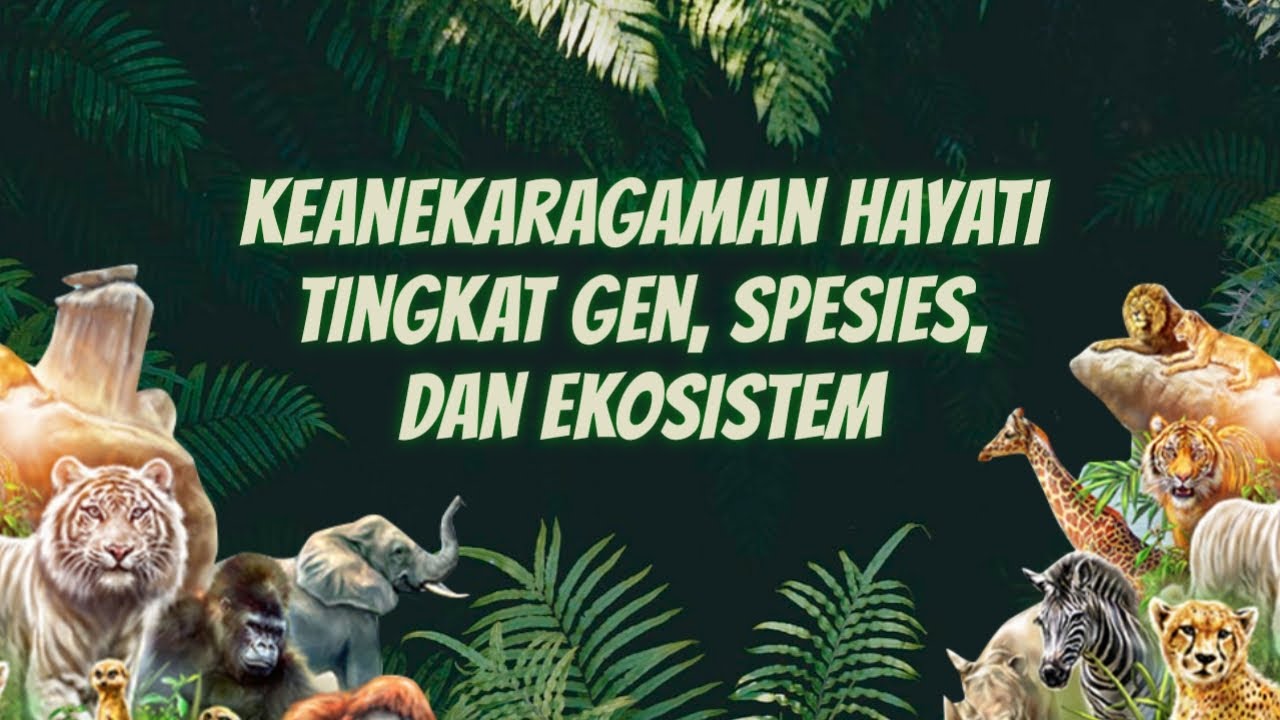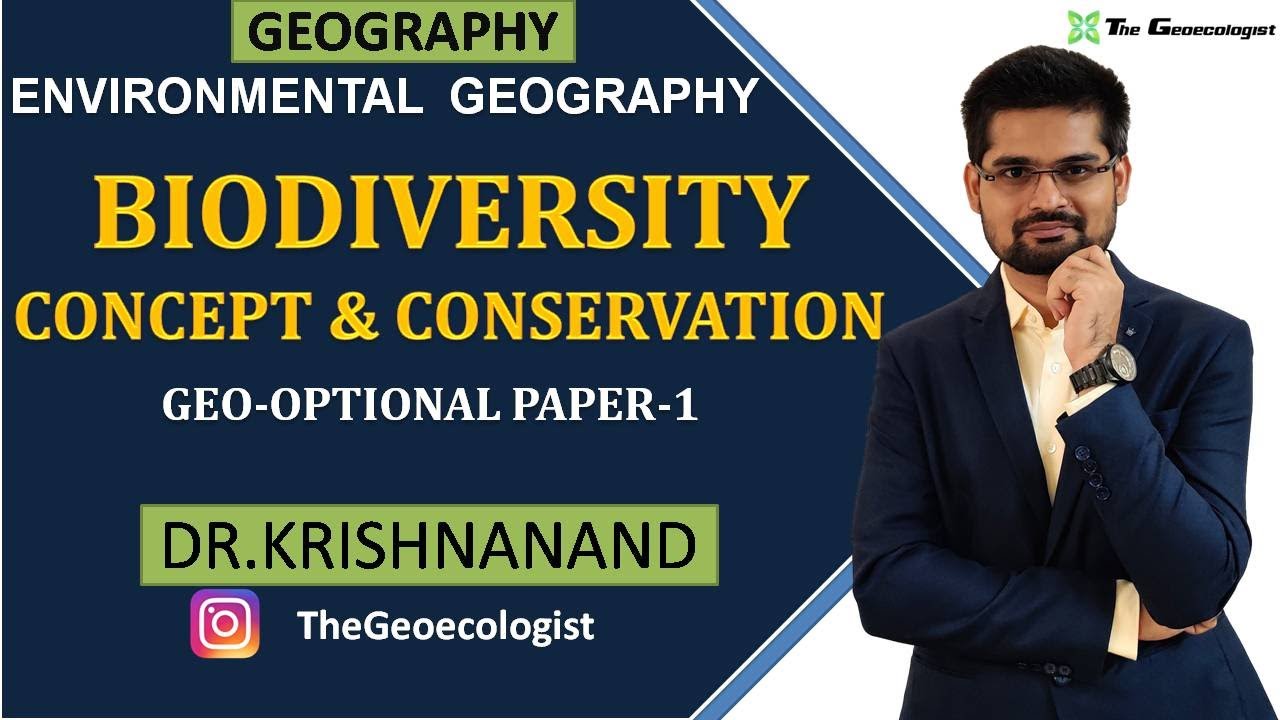Biodiversity in the Philippine Forests | Puno ng Buhay
Summary
TLDRThe video explores the concept of biodiversity, tracing its origins from the term 'biological diversity' coined in 1980, and how it was later shortened to 'biodiversity.' It explains three levels of biodiversity: genetic, species, and ecosystem diversity, with examples from the Philippines' rich biodiversity. The discussion highlights the economic, ecological, ethical, aesthetic, and evolutionary importance of biodiversity. It also addresses the threats to biodiversity, such as deforestation and environmental degradation, and emphasizes conservation efforts through both in-situ and ex-situ approaches, including protected areas and gene banks.
Takeaways
- 🌳 The script invites the audience to explore nature parks and appreciate biodiversity in natural settings.
- 📚 Dr. Thomas Lovejoy coined the term 'biological diversity' in 1980, which was later shortened to 'biodiversity' in 1986.
- 🌱 Biodiversity refers to the variety of life, encompassing genetic, species, and ecosystem diversity.
- 🧬 Genetic diversity allows species to adapt to new environments and resist diseases, whereas low genetic diversity makes species more vulnerable.
- 🌿 The Philippines is a biodiversity hotspot with an estimated 53,000 known organisms and is one of the 17 megadiverse countries.
- 🌏 Ecosystem diversity reflects the variety of ecosystems, like forests and marine life, with species coexisting and depending on one another.
- 💰 Biodiversity has economic importance, especially in agriculture, fisheries, tourism, and pharmaceuticals.
- 🍃 Biodiversity also provides ecological services, such as oxygen production, water absorption to prevent floods, and soil fertility from decomposing leaves.
- 🌳 Conservation efforts include 'in situ' approaches like protected areas, and 'ex situ' approaches like gene banks and captive breeding centers.
- 🌱 The script highlights the need for responsible environmental management to protect ecosystems from deforestation, mining, and pollution.
Q & A
What is the meaning of the term 'biodiversity'?
-'Biodiversity' refers to the variety of life forms in a specific area. It encompasses genetic diversity, species diversity, and ecosystem diversity, which together represent the different levels of biological diversity in an environment.
Who coined the term 'biological diversity' and when?
-The term 'biological diversity' was first used by Dr. Thomas Lovejoy, a biology professor at Yale University, in 1980 during STI conferences. The term was later shortened to 'biodiversity' and became widely used in the 1986 National Forum on Biological Diversity.
What are the three levels of biodiversity?
-The three levels of biodiversity are: 1) Genetic diversity, which refers to the variety of genetic information within organisms of the same species; 2) Species diversity, which refers to the number of different species in an ecosystem; and 3) Ecosystem diversity, which describes the different ecosystems formed by various species interacting in a specific environment.
Why is genetic diversity important for a species?
-Genetic diversity is important because it allows species to adapt to changing environments and fight off parasites. Species with high genetic diversity are more resilient to diseases and environmental changes, while species with low genetic diversity, such as domesticated animals, are more vulnerable to disease outbreaks.
How does biodiversity contribute to the economy?
-Biodiversity plays a crucial role in industries like agriculture, forestry, fisheries, pharmaceuticals, biotechnology, and tourism. It supports the agricultural industry by providing a variety of crops and livestock suited to local climates and helps sustain ecosystems that are vital for food production and tourism.
What is the ecological importance of biodiversity?
-Biodiversity supports ecosystems by providing essential resources such as fresh air, fertile soil, food, and water. Trees absorb carbon dioxide and release oxygen, their roots help prevent floods and soil erosion, and fallen leaves decompose into natural fertilizers. A balanced ecosystem is crucial for mitigating environmental disasters such as floods and droughts.
What are the ethical and aesthetic perspectives of biodiversity?
-From an ethical perspective, humans have a responsibility to care for the environment because they benefit from it and are connected to it. The aesthetic perspective emphasizes the beauty of nature—such as blooming flowers, birds' songs, and the graceful flight of butterflies—which brings joy and enriches human life.
What is meant by 'evolutionary perspective' in biodiversity?
-The evolutionary perspective highlights that all species are related through common ancestors. This perspective is supported by fossil records, embryonic development evidence, and biochemical similarities, showing that species have evolved over time and are interconnected.
What are the two major approaches to biodiversity conservation?
-The two major approaches to biodiversity conservation are: 1) *In-situ* conservation, which involves protecting species in their natural habitats, such as in national parks and biodiversity corridors; and 2) *Ex-situ* conservation, which involves protecting species outside their natural habitats, such as in botanical gardens, seed banks, and zoos.
Why is the Philippines considered a megadiverse country?
-The Philippines is considered a megadiverse country because it hosts around 53,000 known species, many of which are found nowhere else in the world. Its unique location and ecosystems make it one of the most biologically diverse countries, second only to Madagascar in terms of species richness.
Outlines

此内容仅限付费用户访问。 请升级后访问。
立即升级Mindmap

此内容仅限付费用户访问。 请升级后访问。
立即升级Keywords

此内容仅限付费用户访问。 请升级后访问。
立即升级Highlights

此内容仅限付费用户访问。 请升级后访问。
立即升级Transcripts

此内容仅限付费用户访问。 请升级后访问。
立即升级浏览更多相关视频

Tingkat Keanekaragaman Hayati | Biologi Kelas X

Keanekaragaman Hayati Tingkat Gen, Spesies, dan Ekosistem | Dunia Biologi

Biodiversity: Concept and Conservation Measures | Environmental Geography | Dr. Krishnanand

O que é Biodiversidade? | Biologia

Science, Technology and Society: Biodiversity and Healthy Society

biodiversity, it's types, alpha, beta, gamma diversity, importance & loss of biodiversity
5.0 / 5 (0 votes)
